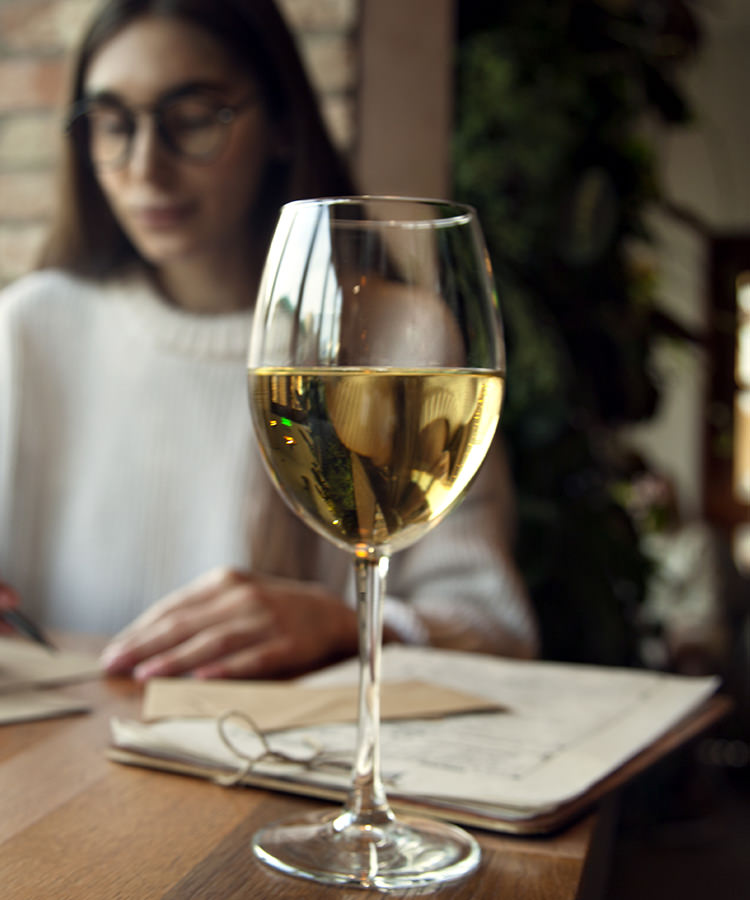After only six short months of teaching beginner and intermediate wine classes, it became clear to me that people had a lot of questions. In fact, many of the same recurring questions came up class after class. Many wine drinkers, despite age, gender, and background, had the same queries about wine. Here are 10 most frequently asked questions in a wine class, finally answered once and for all.
Why do people slurp wine?
When wine professionals slurp wine, they’re essentially doing the same exact thing you’re doing when you swirl wine in the glass, just on steroids. Both swirling in the glass and slurping through your mouth are introducing oxygen to the wine, opening up aromas and allowing more pronounced flavors to come to life.
How long can I keep a bottle of wine?
When it comes to aging, every bottle has a different potential. Certain grapes, such as Nebbiolo and Cabernet Sauvignon, are generally suitable for longer aging, thanks to their tannic structure. But this is all dependent on vintage and producer as well. Your local wine clerk, sommelier, or the wine producer should have a clearer, more concise answer with regard to specific bottles that they are familiar with.
Why do you call some wines by region and other wines by grape varietal?
This gets tricky, because every country has a different system which they use to classify wines, including everything from which grapes are used to bottle labeling laws. Generally speaking, though, most Old World bottles will be labeled by region and New World bottles will be labeled by varietal.
What’s the best way to learn about wine?
Taking classes, attending tastings, and reading (hello, VinePair!) are great resources. But tasting as much as you possibly can will really help you put all your acquired knowledge into practice. So keep on sippin’ — in the name of research, of course.
Is it weird that I like my red wines slightly chilled?
Definitely not. We constantly say that we should be drinking reds at “room temperature,” which is true — except that this phrase was invented prior to the days of central-heating, when room temperature was actually 50 to 60 degrees. That’s your ideal cellar temperature. Your reds should be consumed a bit cooler!
What makes a wine buttery?
The “buttery” sensation you get in your wine could be one of two things. Oak aging in wine can impart soft, creamy sensations to a wine’s feel, similar to that of butter, but is often more associated with vanilla and baking spice flavors. Buttery tastes could also come from diacetyl, a byproduct of malolactic fermentation, which is the process of introducing lactic bacteria to a wine to convert tart malic acid into creamier lactic acid.
What are legs?
People tend to make a big deal about the “legs” or “tears” of wine, but really, all they indicate is alcohol percentage. When you swirl your wine, if the legs that run down the side of the glass are thin and move quickly, the wine has a lower alcohol content. If the legs are thicker and move slower, this indicates a higher alcohol percentage.
Why does red wine make my mouth feel dry and white wine doesn’t?
Red wines are generally more tannic than white wines. The juice used for red wines is macerated with the skins, stems, and seeds of the grapes for a certain period of time, which extracts tannins. Juice used for white wines is generally immediately pressed off the skins, resulting in minimal tannins.
So… what is tannin?
Tannins are simply the compound in wine that makes your mouth feel dry. Tannins come from skins, stems, and seeds in grapes, which is why red wines are generally more tannic than whites. Tannin can also come from wood, so wines aged in oak may have some tannic presence, but wood tannins are generally less harsh than grape tannins.
What’s the difference between Sauvignon Blanc and Sancerre?
Sauvignon Blanc is the white grape used in Sancerre to produce the white wines that we call Sancerre. Red wine is also produced in Sancerre, made from Pinot Noir, but in much less quantity than Sauvignon Blanc.
